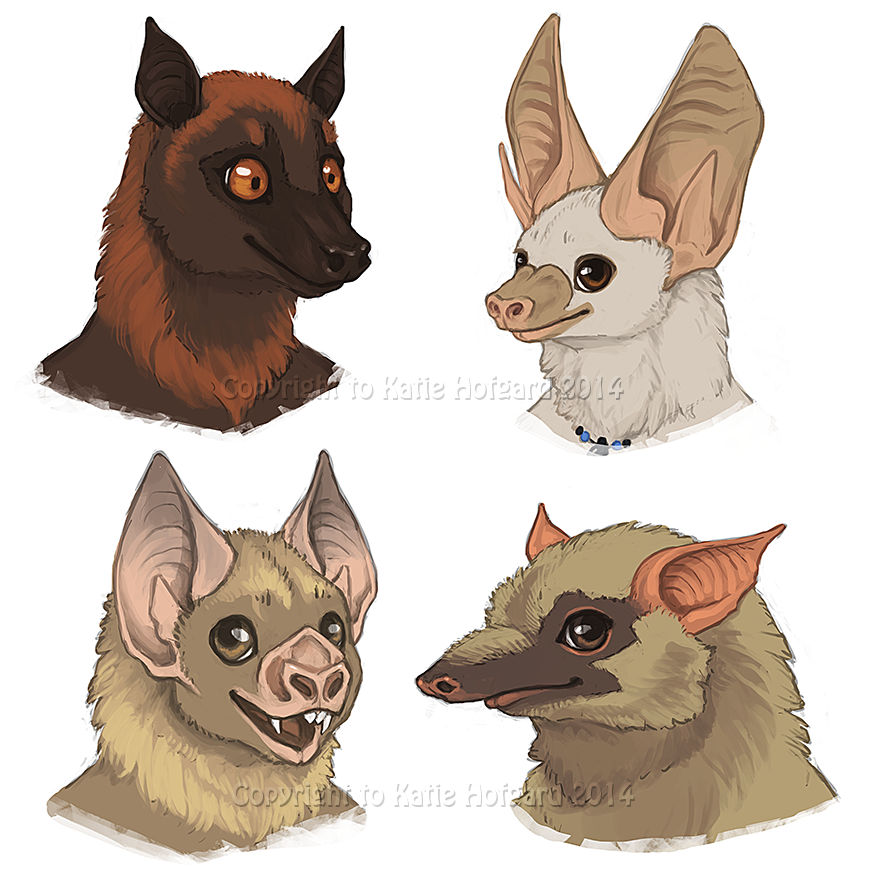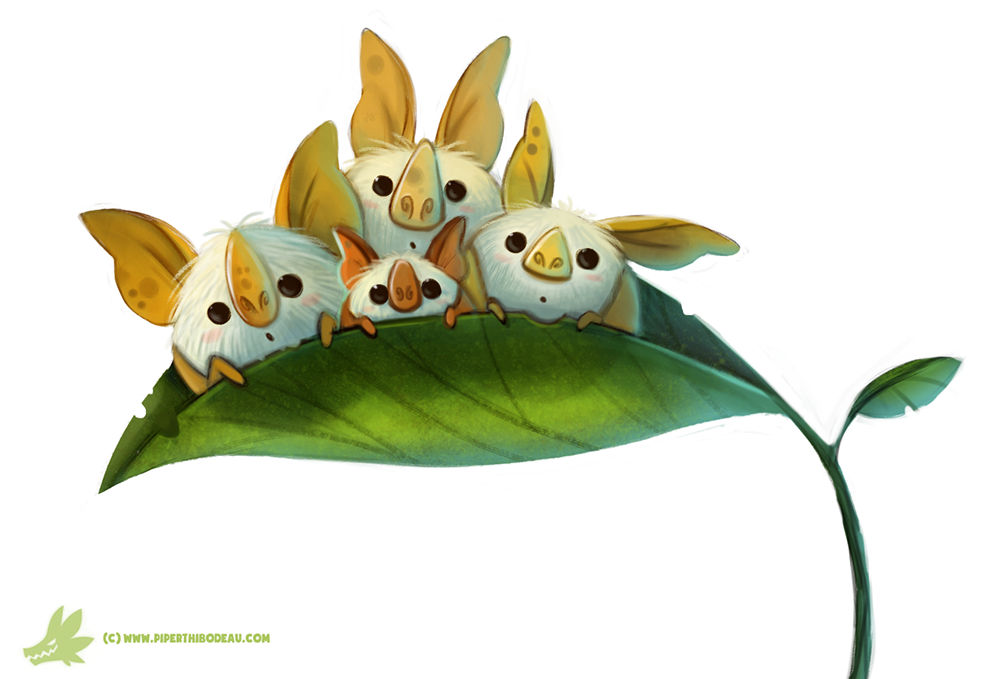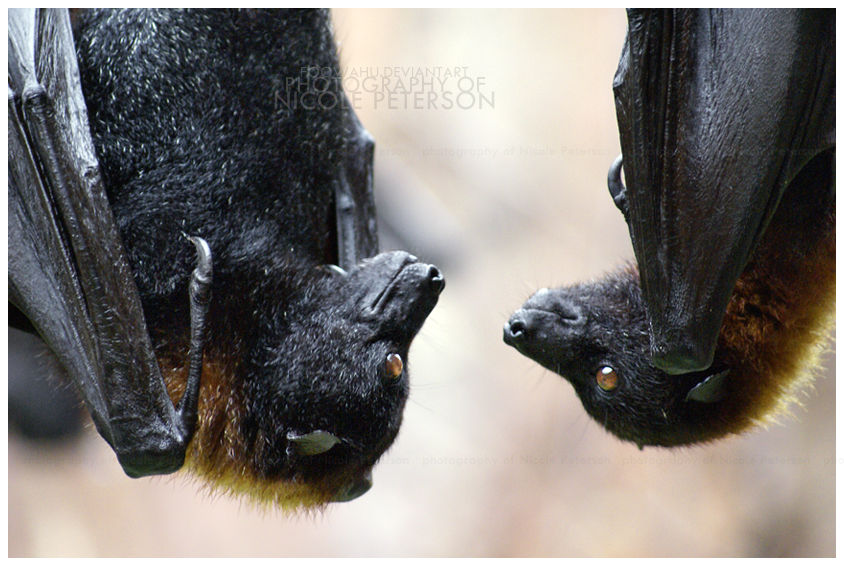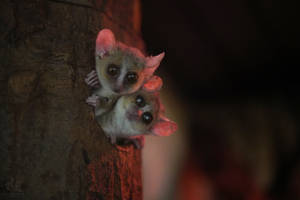Due to ancient folklore, Bats seem a natural focal point when thinking of Halloween
 Vampires are capable of transforming into Bats
Vampires are capable of transforming into Bats  - and there is of course that group of Bats who, like vampires, live on blood
- and there is of course that group of Bats who, like vampires, live on blood .
. Sadly, the capability of flight has not kept Bats safe; currently there are 77 species of Bats classified as Endangered by the IUCN. Some species have not been evaluated, and others are facing such circumstances as which make them liable to be upgraded in the near future. All in all, they are the more than viable subject for this week's Animals Anonymous.
Once you start looking for interesting facts on Bats, you will find more than you've bargained for. One such tidbit is that Bats are the second largest group of mammals; at 20% they are only surpassed by Rodents in their multitude. These 1,331 Bat species can be seperated into two groups of Bats: Megabats and Microbats. Even though the names suggests Megabats are enormous and Microbats teeny-tiny, this does not signify for all Bats within either class, though many Megabats are rather sizeable. For example, on the spectrum of sizes there is the tiny Kitti's Hog-Nosed Bat, or Bumblebee Bat, weighing less than a penny, to the Golden-Crowned Flying Fox, <a wytiwyg="1" href=":" http:="" www.batcon.org="" why-bats="" bats-are="" bats-are-cool"="">weiging 2.6 lbs.
The most obvious difference between the Microbat and Megabat is at once the most distinctive feature of Bats: echolocation. Where Microbats rely on echolocatioon, Megabats rely on eyesight - with a sole exception. This defies the myth that Bats are only nightdwellers as many Megabats can see perfectly well in daylight with the Samoan Flying Fox going against the rules and foraging exclusively during daylight hours.
A Bat's diet can consist of many things; there are fruit eating Bats, those who feast on nectar or pollen, insectivores, but also fish, frogs and other amphibians, or even smaller bats. As mentioned, some Bats feast on blood, mainly animal blood, though they have been found to feast on humans as well. However, these Vampire Bats aren't of the large variation, but in truth rather small, creeping up on sleeping hosts on all fours and make a small incision from which they lap up blood. Their saliva probably continues a anticoagulants to prolong bleeding. The Pallid Bat, is another good example of a Bat who has adjusted to its diet; eating mostly venemous arthropods such as Scorpions and Centipedes, it is immune to their venom.
To see a range of the various bats to roam this planet, take a look at this video:
As mentioned earlier, the amount of Bats to choose from to discuss are so numerous, that instead of walking you through all of them, we'll stick to divulging a couple of fascinationg Bat traits.
Did you know Bats can nest in various places?
Nearly everyone has heard a story or two about people venturing into a dark cave and stumbling upon a crowd of Bats sleeping attached to the ceiling - in which case the Bats always inadvertently seem to awaken and make their way outside. Bats will most commonly overnight in natural caves, but with human activity encroaching upon nature, Bats are at times forced to find different dwelling.
Without any natural caves present in rural areas, Bats are known to inhabit abandoned - or populated - buildings. A famous example of urban Bats is the population of Bats roosting under a bridge in Austin, Teas. They swarm in large group form under this bridge evey sunset.
Less common are Bats whom make their own nests. The Honduran White Bat (you know which one I'm taking about, those little cotton-balls) make tents by nibbling on large leaves until they fold over.
The most common way of roosting however is stll in caves, with a the Bracken Cave in Texas holding numbers of more than 15 million Bats during the summer, when Mexican Free-Tailed Bats migrate to this specific cave to give birth to the next generation.
With so many Bats roaming the Earth, it's no surprise hearing that these creatures - like many animals - face numerous threats in the areas they inhabit. One genus of Bat alone, knows so many subspecies it can be found across every part of the world except Antarctica.
In America they are, quite literally, facing a threat to their health: The white nose syndrom. Bats become infected with a white fungus, which primarily affects their faces and wings, makint it look as though they have a white nose - hence the name. Across the Eastern US alone, the disease has claimed <a wytiwyg="1" href-="" "http:="" www.batcon.org="" resources="" for-specific-issues="" white-nose-syndrome"="">at least 5.7 million bats. The disease is dangerous as it interrupts Bats' winter hibernation, making them venture outside where they use-up their winter reserves and either starve or freeze to death
However, a bit of good news regarding the gloomy outlook for Bats and WNS is looming thanks to recent research - focused on delaying the ripening of fruit, namely bananas. Fruits exposed to Volatile Organic Compounds (VOCs) were not getting moldy. The same could be said for the effect of VOCs on the fungus that causes WNS. Last year, a group of 75 Bats that had been successfully treated were back into the wild.
Illnesses aren't the only threats Bats are facing, as their very diets are being poisoned by humans, as crops are forever being treated with pesticides. Bats are seeing a decline of one of their food sources, as insects are descimated by these pesticides. A little known fact: some areas know such a multitude of insectivorous Bats that, when left to their own devices without human interference, they'd be just as effective as pesticides. However, the surrounding area must be compatible with the roosting needs of Bats.
Bats don't just remove pests from plants, they also play a vital role in pollinating various plans. More than 500 plant species rely on Bats to pollinate their flowers. Just imagine: Without Bats there'd be no mango, banana, cocoa, guave or agave.
While Bats pollinate these plants, they also eat their fruits, and are responsible for the dispersal of seeds of plants - though their guano (feces) is also harvested to be used as fertiliser. If this system of pollination is disrupted, this can have dire consequences for both bats and plants, and thus humans alike.
A different threat Bats face, is their easy scapegoat reputation. Bats are notorious for carrying diseases which may affect humans, and it is not uncommon for Bats to be r
ather quickly portrayed as the bad guy when there's a disease outbreak. The most well-known disease attributed to Bats is Rabies, though they have been implicated in spreading ebola and SARS, while their guano can be toxic as well. This has caused some backlash against the animals, making them even less popular to the public.
The list of threats to Bats does not stop here.
In some countries, wind turbines are built fast and in skyrocketing numbers, promoting green energy. An often unknown side-effect of this green energy practice is that it has been found lethal to Bats. During fall migration, for as of yet unkown reasons, Bats will fly close to wind turbines and the often fatal hit of the blades has become a sad side effect.
Many of the Bats who've fallen victim to wind turbines have poor vision, as they rely on echolocation. But this identifying trait doesn't protect them from fast moving objects and they're often unable to identify the blades in time. Luckily, there have been guidelines introduced to urge wind farms to reduce the speed at which the blades rotate during peak migration season, reducing a third of fatalities by wind turbine.
High mortality rates due to whichever reasons - human induced as well as natural - can be devastating for Bats, as they have a low reproduction rate. Almost all Bat species only give birth to one pup at a time. As such, dangers to mothers during the birthing seaseon are twice damaging as this can be fatal to both mother and child.
A more cute and fun fact about Bat mating behaviour is the tendency of male bats to sing to their prospective mates, similarly to various song birds. There are at least 20 species of Bats known to sing, with structured songs with rhythm and repeated patterns. Follow either this one or this other link to hear a male Bat serenading his love
Good news
In Zoo Vienna Schönbrunn, a young Kalong - a Large Flying Fox living on fruit - was found alone in a tree in the tropical rain forest house earlier this year. The pup was only a few hours old and already suffering from reduced body temperature. He was taken back to his mother, but she showed no interest. Since then, little Banshi has become the surrogate child of a zoo keeper and is thriving in her care.
Weighing in at only 150 grams, Banshi will grow to become a member of the largest Bat species.
















